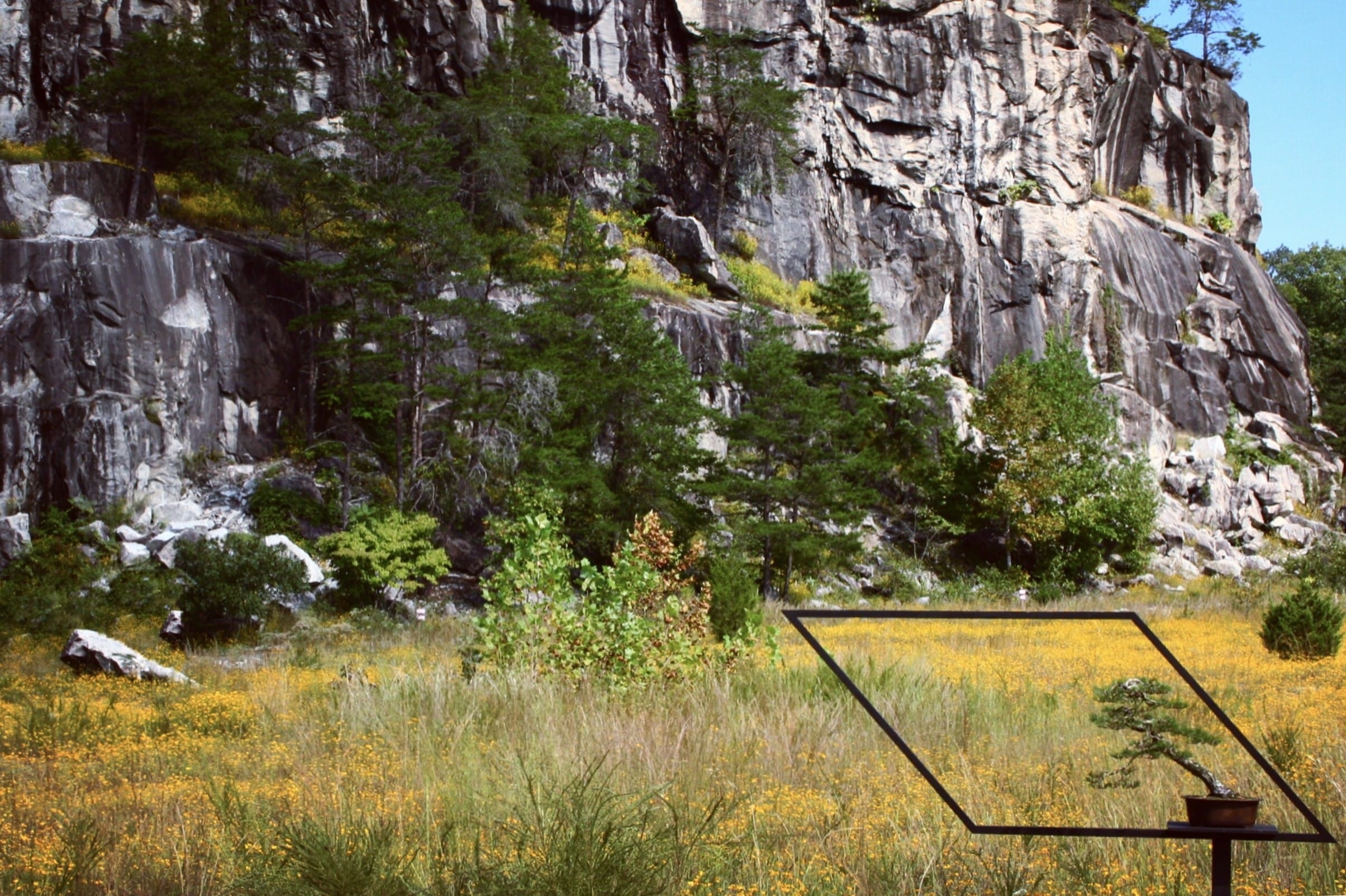The art of bonsai involves very strict guidelines for everything from the shape of the tree to the container it’s planted in, as well as many rules about how bonsai trees should be displayed.
At most bonsai exhibitions around the world, artists are judged on these elements, and doing anything outside the box can be viewed as a technical mistake. According to bonsai artist/sculptor/photographer Creighton Bostrom, it’s like “judging a painting on the brush strokes and the frame instead of the meaning of the composition.”
Formal bonsai displays attempt to represent a landscape. Traditionally, they include a companion plant that represents the foreground, a hanging scroll that represents the background, and the potted bonsai tree in the middle, atop an appropriate wooden stand.
Bostrom says the rigid rules surrounding bonsai displays can sometimes limit the artist’s opportunity for self-expression. This led him to create his “Geometry in Space” project that aims to help viewers experience bonsai in a new light. We spoke with Bostrom via email to learn more about his project.

Bostrom describes “Geometry in Space” as a mixed-medium project that combines photography, sculpture, and bonsai. He said the project is an “exploration of Bonsai display in nature, in vast open spaces, where there is no limit to depth or lateral movement.”
In traditional bonsai exhibitions, each tree is displayed in a small alcove that’s meant to help focus the viewer’s attention on the bonsai and the artist’s work. In contrast, Bostrom’s goal with this project is not to show off the detailing of the bonsai tree itself, but to put it in a natural context that changes the viewer’s perspective.
He includes sculptural frames in his shots to guide the viewer’s eye to the bonsai tree as well as create the intended visual movement of the composition. The result is an almost surreal series of images that are striking in their use of depth and scale.

Bostrom said he thinks the compositions in his project achieved an unusual sense of harmony, thanks to bonsai.
He pointed out that his images involve “the juxtaposition of a bonsai and a large tree and the framing of a singular space combined with seemingly endless depth. These two extremes should create conflict in most visual art, however, in my opinion, the bonsai creates a harmonious feeling that unites the composition.”
“I fell in love with a juniper bonsai at a local nursery but the price far exceeded what I was willing to spend at the time. I decided it would be far more economical for me to make my own.”
However, he soon realized the process was much more difficult than he thought.
A daunting amount of time and effort go into the cultivation of bonsai trees. When bonsai trees are grown from seed, it takes at least three years before the tree is ready to start being shaped.
Additionally, bonsai artists will wrap copper and aluminum wire around the tree’s branches and trunk to control the shape of the tree as it grows.
But care has to be taken to ensure there are no marks left by the wire, as one of the rules of bonsai is that the artist’s work shouldn’t be apparent to the viewer. For example, whenever a branch is removed to help shape the tree, the scar has to be concealed.
The miniaturization of bonsai trees also makes them more sensitive than trees in the wild. Since they have smaller roots and less foliage, they need special care to remain healthy. Everything from watering to fertilization, temperature, and light conditions needs to be controlled with care.
Despite learning the challenges involved with growing bonsai trees, Bostrom decided to continue working at it. In the following years, he started visiting Mike Brawley for guidance, the artist who had created the tree that Bostrom had fallen for.
Along the way, something surprising happened. Instead of growing bonsai trees as a means to an end, Bostrom fell in love with the work.
“I love the process of creating bonsai. The sifting of the soil, the re-potting, the wiring and pruning. It is a true sculptural art form, a live sculpture, the work of which connects the artist to nature, the seasons, the environment, and our place in it.”
“These exhibitions are incredibly beautiful and inspiring and will hopefully continue for generations to come.”
He pointed out that his goal with “Geometry in Space” was not to try to replace traditional exhibitions, but to explore the mixing of bonsai with other art forms.
“When a person sees a traditional exhibit their first thoughts typically are of Japan and the Japanese aesthetic, what a bonsai tree symbolizes to most Americans.
“By placing the tree in a mixed medium context, the first thought is typically not of the bonsai. Hopefully, this process will allow viewers to experience bonsai in a new light and see it as an art form and see its potential as a contemporary art form medium.”
Read more about flora-inspired art:
Why This Artist Photographed 10,000 Roses
7 Artists That Turned Christmas Trees Into Creative Installations
How to Turn Your Love of Flowers into a Floral Design Career













